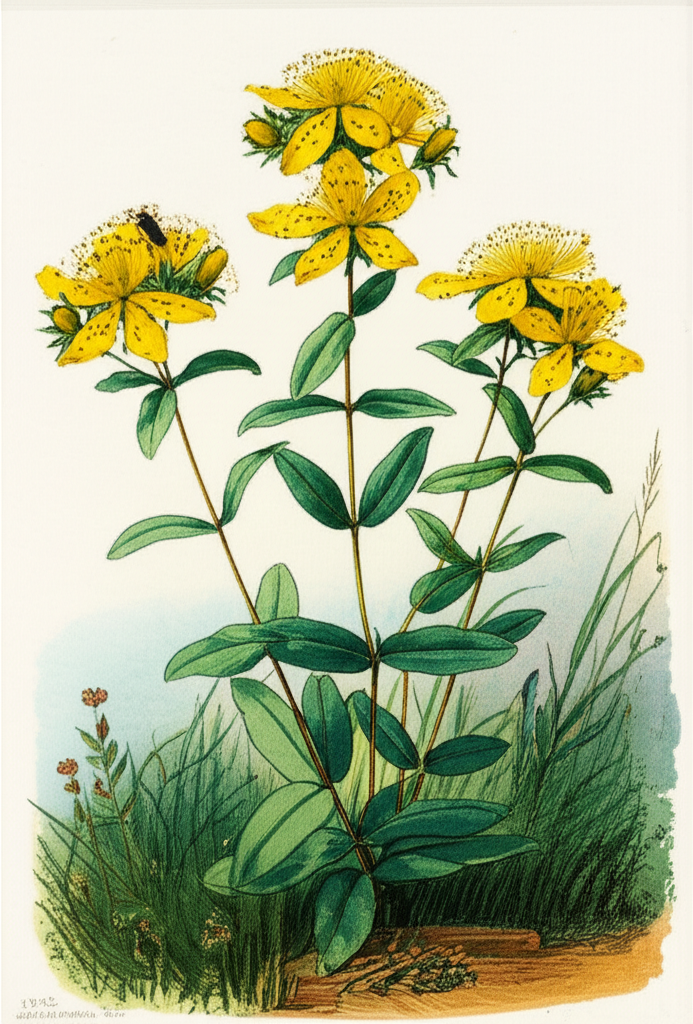
St. John’s Wort, scientifically known as Hypericum perforatum, has a long history intertwined with both medicinal uses and potent superstitions, particularly its purported ability to ward off the devil and other evil forces. This belief, rooted in the plant’s physical characteristics and historical context, reveals much about past perceptions of health, spirituality, and the supernatural.
Historical Background: St. John’s Wort boasts a medicinal history dating back to antiquity. Pliny the Elder, in his Natural History (AD 77), detailed its uses for treating various ailments, including diarrhea, bladder problems, and promoting urine flow. Ancient Greeks and Romans also employed it to address venomous bites, menstrual pains, upset stomachs, ulcers, and even combat depression or melancholy. However, its perceived spiritual powers were equally significant, contributing to its esteemed status.
Cultural Beliefs and Folklore: The botanical name itself provides clues to the plant’s spiritual significance. Hypericum originates from the Greek word hyperikon, meaning ‘over ghosts,’ derived from hyper (‘over’) and eikon (‘apparition’). Perforatum refers to the plant’s distinctive perforated appearance due to tiny black oil-secreting glands in its petals. The plant’s strong, turpentine-like odor was also a factor, believed to act as an incense to repel evil spirits.
Evolution of the Superstition: A poem dating back to the 15th century encapsulates the medieval beliefs surrounding St. John’s Wort’s protective properties:
St John’s Wort doth charm all witches away If gathered at midnight on the saint’s holy day. Any devils and witches have no power to harm Those that gather the plant for a charm: Rub the lintels and post with that red juicy flower No thunder nor tempest will then have the power To hurt or hinder your houses: and bind Round your neck a charm of similar kind.
This poem illustrates the belief that St. John’s Wort, especially when gathered on St. John’s Day (June 24th), held the power to ward off witches, devils, and even natural disasters. In the 13th century, physicians from the Salernitan medical school in Italy, described St. John’s Wort as herba demonis fuga, and later named it fuga demonum, meaning ‘devil’s scourge,’ emphasizing its perceived ability to protect individuals from demons.
Modern Interpretations: As medical understanding of psychological disorders advanced during the Renaissance, the concept of ‘demons’ evolved to describe feelings of melancholy and mental distress. While the belief in literal demons waned, the association between St. John’s Wort and mental well-being persisted. Today, St. John’s Wort is commonly used as a herbal remedy for treating depression, a far cry from its initial association with warding off supernatural entities. Although the original superstition may have faded, the plant’s long-standing association with protection and healing continues to influence its modern usage.